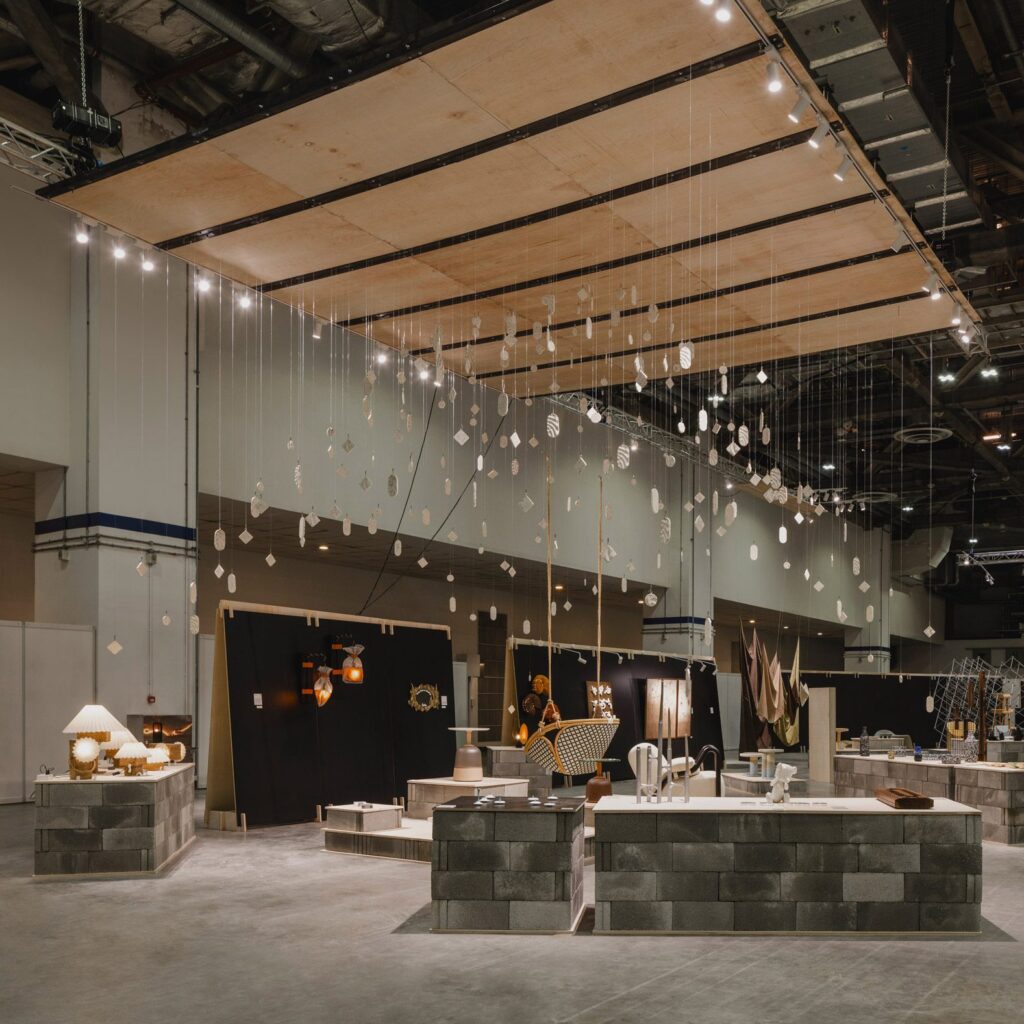[ad_1]
More than 50 emerging designers from Indonesia, Malaysia, the Philippines, Singapore, Thailand and Vietnam have showcased furniture and products at the Emerge exhibition at Singapore Design Week.
On display as part of the FIND design fair at Singapore’s Marina Bay Sands & Expo and Convention Centre, Emerge was curated by Design Anthology founder Suzy Annetta.
This year, which marks the third edition of Emerge, designers were invited to create pieces under the theme These Precious Things. Many focused on reusing existing materials.
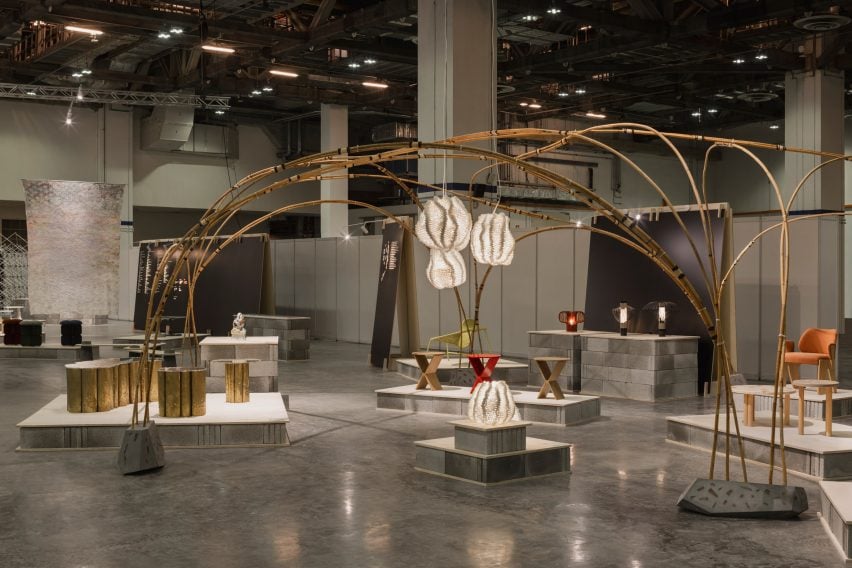
Interior designer Georgina Foo, who together with architectural designer Genevieve Ang runs design studio Gin&G, showed side tables made from rice husks and a chair and light made partly from eggshells.
“We are a spatial design studio, and we also do object and furniture design,” Foo told Dezeen. “One really key belief for our studio is that we’re very focused on sustainability.
“We experiment a lot with materials and in particular alternative materials that might be able to help us and the people we design for live a bit more consciously,” she continued.
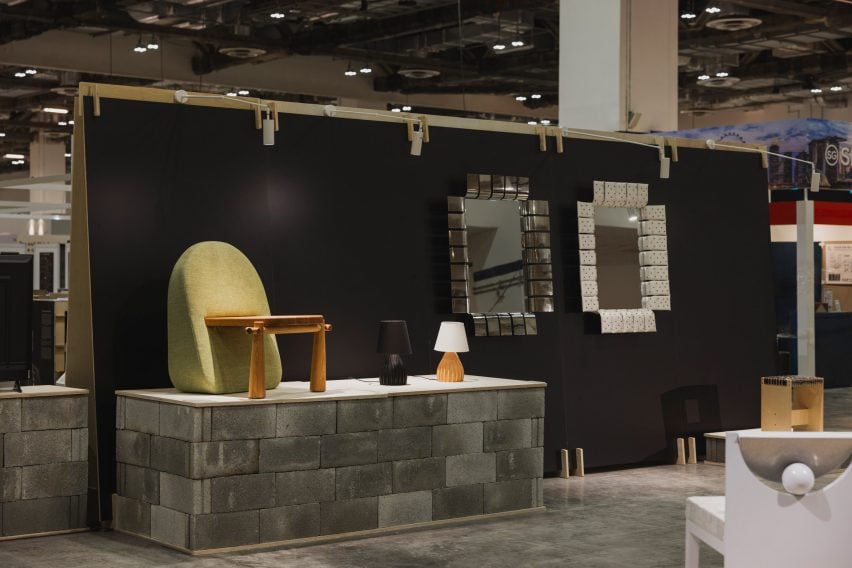
Foo and Ang used materials from its client, who runs a biomaterial company, to create its Emerge furniture pieces.
“The idea for the design of this was to minimise the waste and be very efficient with the material,” Foo added.
Other pieces using waste materials at Emerge included Indonesian designer Handhyanto Hardian’s Cumulo side table made from construction waste and post-consumer waste, and Philippine designer Edward Sibunga’s Nesting table made from wood and post-industrial waste.
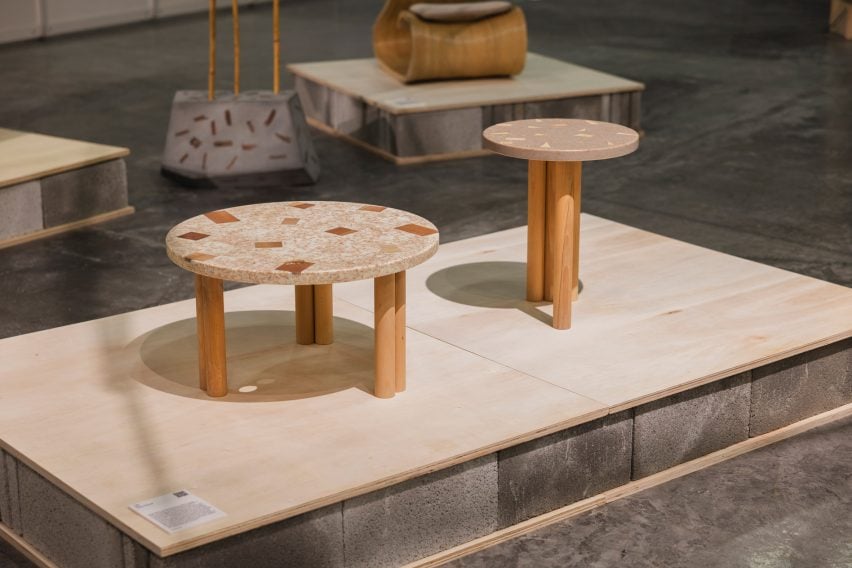
To create its terrazzo-like look, Sibunga used wood chips and other scrap material.
“Sibunga has a wood workshop in Manila where he makes a lot of pieces, and the terrazzo tops of these tables are actually wood and sawdust scraps from his own practice,” Annetta said.
“He’s cleaned up the floor of his workshop and kept all of that waste material and put it into a resin to create the surface of the tables here.”
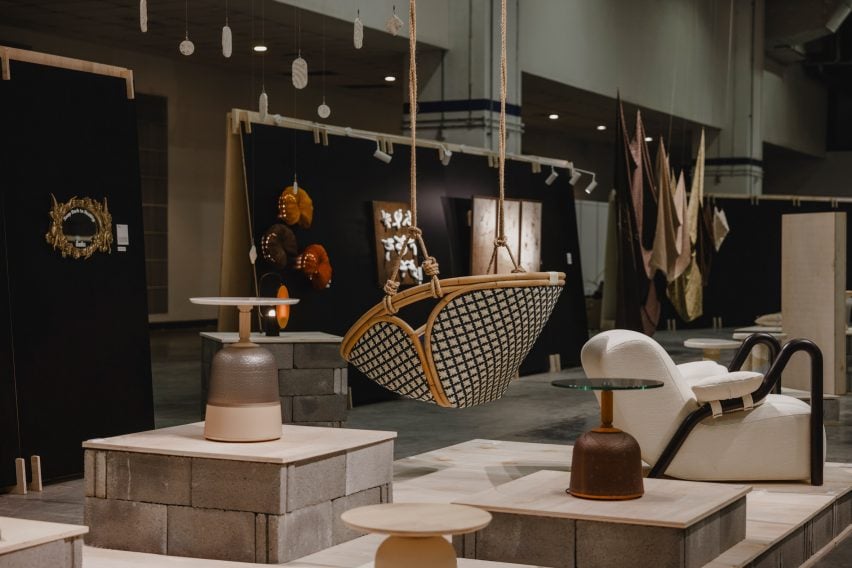
When curating the annual exhibition, which also features pieces from recent graduates, Annetta looked for designers who could not only create something in time for FIND but who also related to the theme of the exhibition.
While material reuse was a red thread throughout the exhibition, what materials designers used was also partly down to regional availability.
“For example, Indonesians tend to regularly work with rattan because it’s very readily available, it’s from Indonesia and obviously they’re quite proud of their natural resources,” Annetta told Dezeen.
“It’s something that they’re curious to explore and experiment with because it’s relatively new – up until, I think last century, rattan was purely exported, they weren’t working with it; 1970s and mid-century rattan furniture were almost always made in Italy,” she added.
Among the Indonesian designers showing at Emerge was Alvin Tjitrowirjo, who showed his rattan and wicker wood shelf designed with Angela Mayrina.
“This piece is called Jiwa, which translates to soul and spirit in Indonesia, ” Tjitrowirjo said. “We wanted to respond to this year’s brief of value by promoting the spiritual side of value that has long been very closely intertwined with craft.”
“The piece is inspired by altars that you can easily find in Chinese homes, where they act more like a portal or a medium to connect between us humans on the earth and to beyond,” he added.
“So looking at today’s challenges with environmental destructions, how people are being very disconnected with nature or even with other people itself, maybe this can serve as a response; maybe we can have a better connection with nature.”
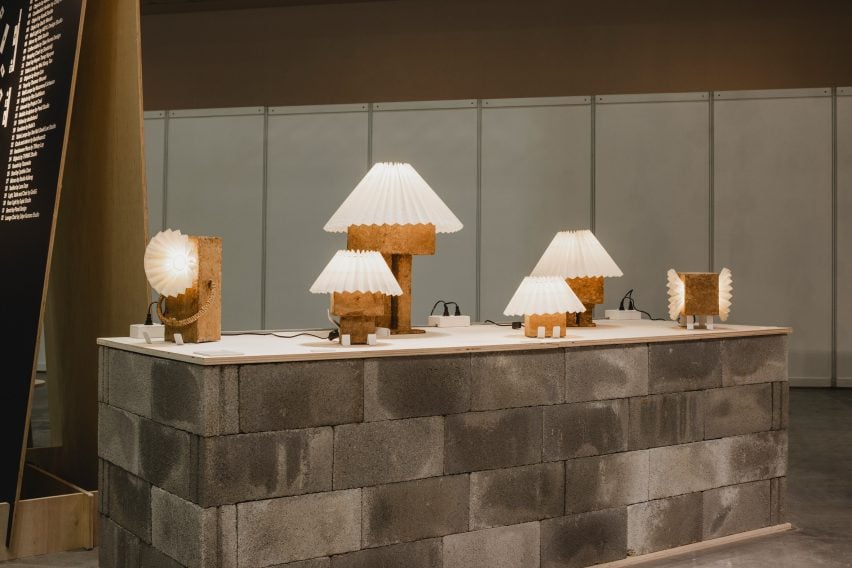
Singaporean designers, meanwhile, tend to be more experimental, Annetta said.
“Singaporeans, I think have the benefit of not really having any of those hang-ups – it’s, I guess, technology, but also not being tied to any particular culture or tradition, I suppose, because it is so multicultural and a relatively young country to some degree,” she said.
“So I think they probably tend to be more broad and experimental,” she added.
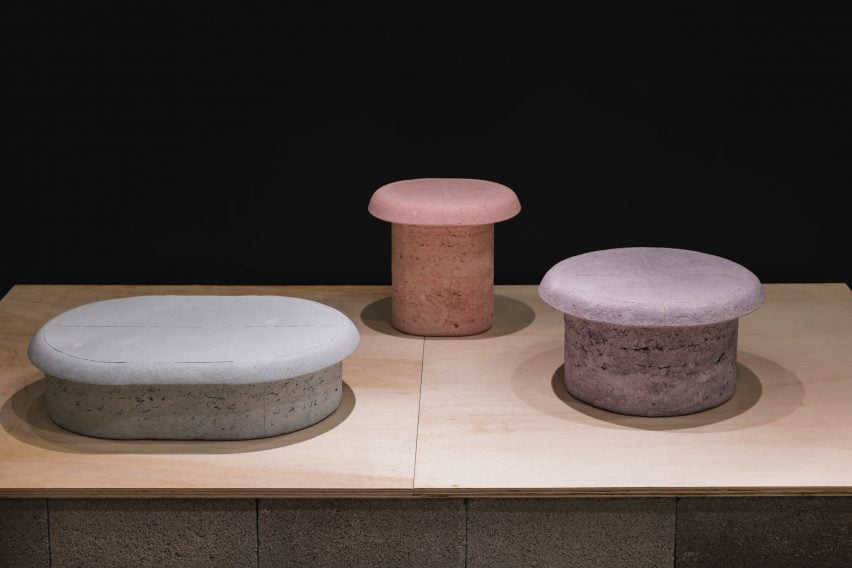
Singaporean designer Emeline Ong also worked with material reuse for her Pastille Collection, which was longlisted for a Dezeen Award this year.
Ong created the collection, comprised of three pastel-hued tables, from a paper-pulp mixture after setting herself the restriction of creating everything from home.
“I just wanted to be closer to the making process,” she told Dezeen.
“I used a lot of household and common materials to create these pieces, even the paper – it was all from my brother’s recycled schoolbooks at home,” she added. “I made them using a dehydrator, a blender and a shredder.”
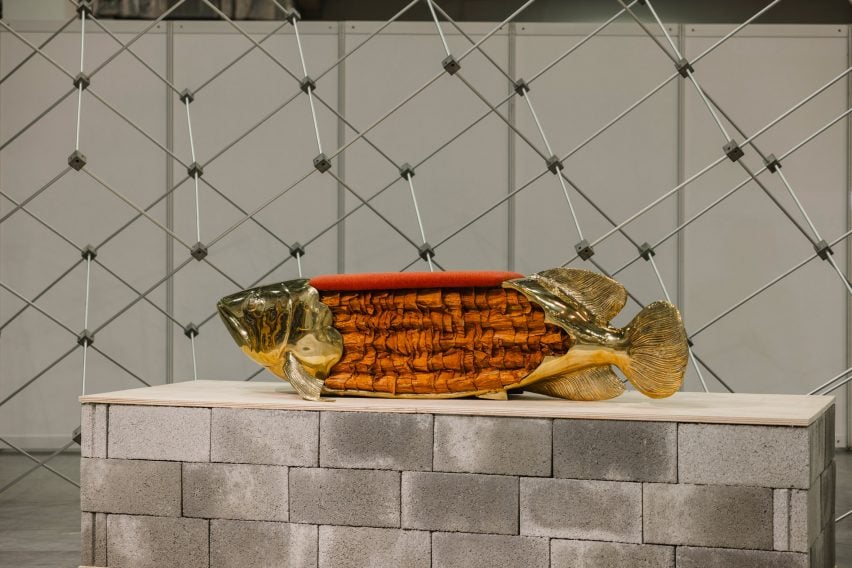
Other innovative products on show at Emerge included Philippine designer Jasser Aguila’s playful Iba-Iba table lamps, which look like small individual characters, and Thai artist Apiwat Chitapanya’s Arowana bench, designed to look like a dragon fish.
To Annetta, the designs on show at Emerge represent just a small fraction of the talent to be found in the region.
“It’s just the tip of the iceberg,” she said. “There’s a lot going on; the show is probably a long time coming, and I think really shows what’s been happening.”
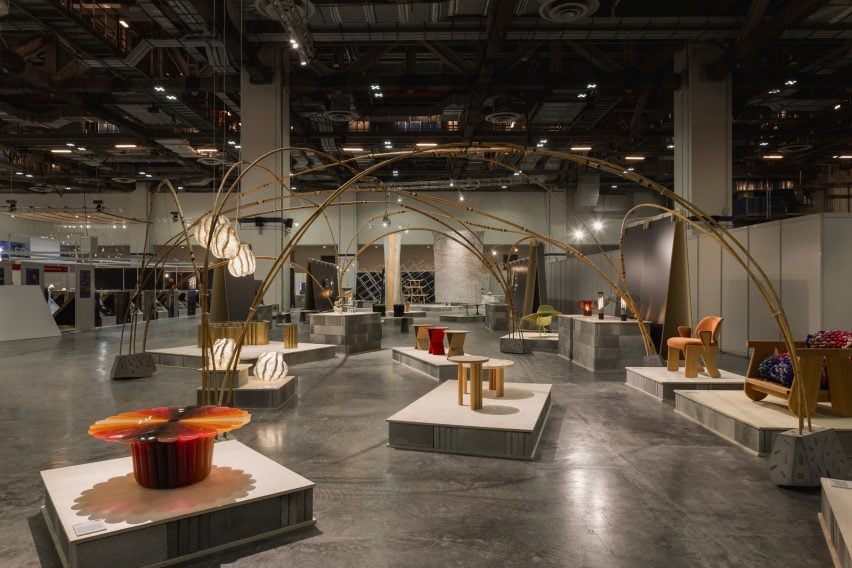
Emerge also gives a platform to designers who may have previously shown in Europe, but are finding that harder because of increasing costs.
“There’s incredible creativity, collaborations, manufacturing, experimentation, but there’s just not enough platforms like this or opportunities for them to show their work,” Annetta said.
“I guess they all would have traditionally aspired to be in Milan, but as we know, it’s getting bigger and bigger and busier and more expensive, and designers from anywhere in the world are finding it hard to cut through the noise,” she added.
“It’s really great for us to be able to provide opportunities to people in this part of the world, where they can partner with local buyers and local makers, and for them to meet their peers and talk about some of the challenges that they’re facing.”
The photography is courtesy of Design Anthology.
Singapore Design Week takes place from 26 September to 6 October 2024. Dezeen is a media partner of Singapore Design Week. See Dezeen Events Guide for an up-to-date list of architecture and design events taking place around the world.
[ad_2]
Source link

